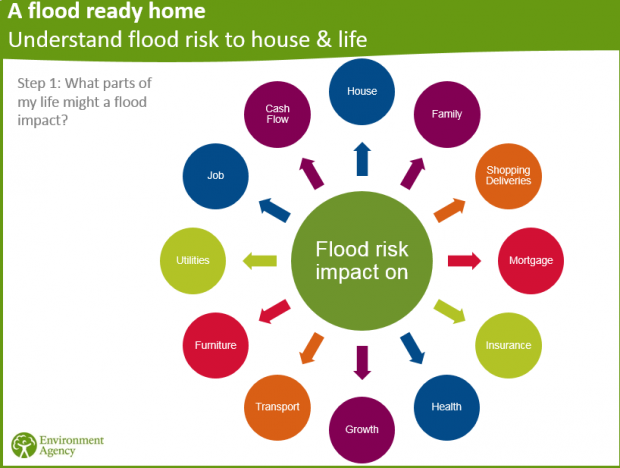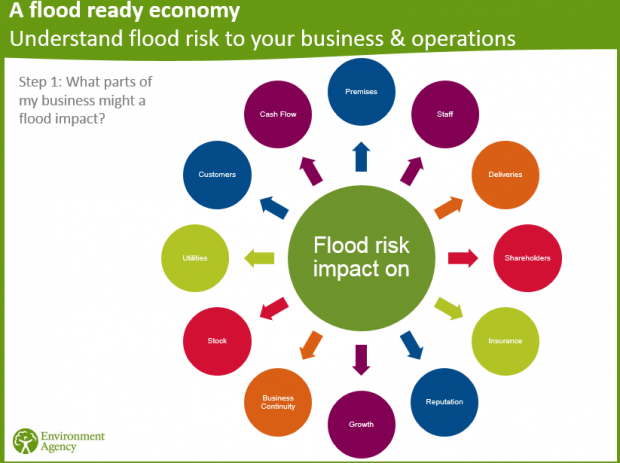The Environment Agency – like so many other organisations – would not be able to do its job properly without effective partnership working. Just like in our home life, partners are really important in our work life too – we have a wide range of partners – from community groups, local authorities, water companies and businesses, to name but a few.
But to have a fulfilling partnership we need to first work out who a potential partner could be. In our home lives and relationships we meet people through friends, through colleagues and socially. We invest time in getting to know people we have something in common with, build that trust and may then start a relationship. I spend a lot of my time mirroring that with the partnerships I build when I’m working and I’d like to share how I do it.
Identifying what we have in common
Firstly, what have we got in common and is there enough there to make an approach? I’m doing this using computer maps of flood risk and mapping business interests, for example where supermarkets are located and where they overlap with our planned flood defence schemes.
So that's pretty straight forward; I then start to understand our common ground, or perhaps ‘common water’ and once this has been established then can have a chat about how we could work together. Getting the potential partner interested in us, continuing my relationship analogy, is a bit like texting someone and hoping to get a reply. You have to make your approach relevant.
Secondly, I need find out more about them. In your personal life maybe you will ask their friends or perhaps look at their Facebook profile to see what they like doing. At work, my equivalent involves gathering information about their business so I know more about how we overlap and what opportunities there may be to work together. What do they have in their risk, environmental and corporate social responsibility policies? Are they aware that flood risk is something which could affect their business? What opportunities can we present to them that will benefit us both? For example protecting a key access road that their supply chain depends upon.
What’s in it for them?
Once I understand more about them I can then convince them that meeting me is in their interest. If I present a good case for working with us at that meeting then it leads to further conversations. So, I get the second date.
When I do this I ensure that I present my offer or opportunity in a way that resonates with who I am meeting. So what does that mean?
Well, for a moment pretend you're a car company. You'll notice that all the adverts whilst featuring the car are primarily about what it can do for you, how it improves your lifestyle, those amazing empty country roads you can drive down and how this metal box can help you get what you want. It’s the same when we seek partnership, we need to tailor our offer to the person or company we want to partner with.
So I don't really talk about flood risk, instead I talk about the impact flood risk has on the things that matter to the potential partner, like their supply chains or customers and how partnering can reduce those impacts and create opportunities. Recently I’ve been working with a number of high street stores at a national level, encouraging them to share flood messages with their staff and customers and making contacts for my colleagues working on schemes to talk to.
It’s so important to think carefully about audiences when communicating. Just because we talk about flooding every day doesn’t mean our audience does.
Make it real for the audience
One of the best ways to help encourage action is to make it real to the audience, what does it mean to them? How could doing something and taking some action help them?
We can do this with organisations and also with the public. I've sketched out 2 wheels below to look at how to make flooding more relevant to each. I'd be interested to know what you think. What would encourage you (in your home or work life) to understand your flood risk and to take action?


Of course my dating analogy is tongue in cheek, but it's a good analogy. Get to know the person or organisation you want to have a relationship with, talk their language, help them see what you have to offer, maintain the relationship and both get what you want from it. Common ground, common water.
We’ve applied this thinking in the work we do on Natural Flood Management, working closely with communities and other organisations to slow the flow of water into flood risk areas using things like woody dams. Working with farmers and other landowners and understanding what they want means that we can develop great partnerships and deliver real difference on the ground. Find out more on this work at http://www.highwaterfilm.co.uk/
Just don't turn up to the first meeting with a bunch of flowers or a box of chocolates, unless you know that’s what the potential partner wants of course.

1 comment
Comment by Dave Wiseman posted on
Insightful blog but what if a like business wants to network and build a working relationship with the EA? How would it work the other way around?